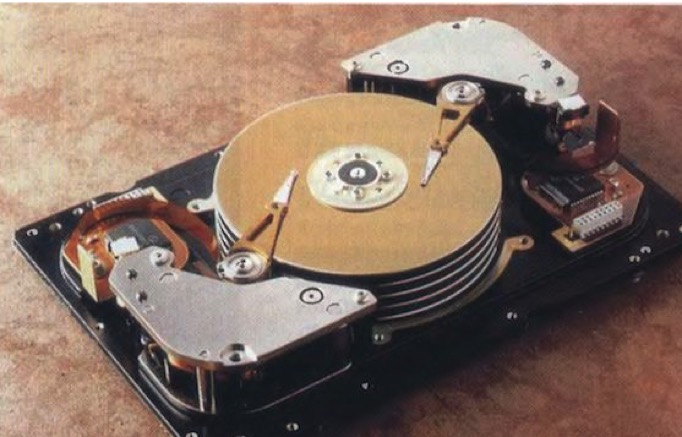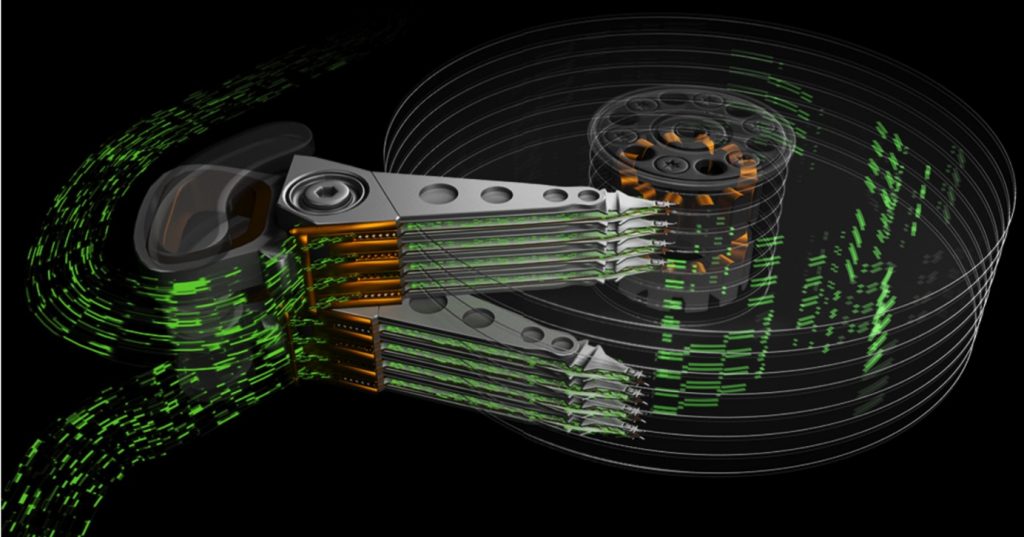Seagate Innovates With Multi Actuator for HDD for Better Performance
Any interest?
This is a Press Release edited by StorageNewsletter.com on December 25, 2017 at 2:40 pm This article, published on a blog of Seagate Technology LLC, was written by Jason Feist, its director of technology strategy and product planning responsible for the company’s data center product roadmap. He has 15 years of experience in HDD engineering R&D, operations, and product line management, worked in head/media engineering management as a product design lead and as Asia regional product launch lead. He also an Open Compute Project (OCP) gold member.
This article, published on a blog of Seagate Technology LLC, was written by Jason Feist, its director of technology strategy and product planning responsible for the company’s data center product roadmap. He has 15 years of experience in HDD engineering R&D, operations, and product line management, worked in head/media engineering management as a product design lead and as Asia regional product launch lead. He also an Open Compute Project (OCP) gold member.
Multi Actuator Technology: A New Performance Breakthrough
Boosting capacity is half the solution. If fast data access doesn’t keep pace, the potential of data is limited.
Computing power, storage capacities, and reduced latency – all must keep moving forward if technology innovators are to continue to help solve humanity’s greatest challenges.
To that end, Seagate unveiled its new Multi Actuator technology, that can double the data performance of its future-generation HDDs in hyperscale data centers. As higher areal densities on future HDDs put downward pressure on performance, this technology will more than offset these pressures. That means customers with data-intensive applications will continue to enjoy the highest levels of HDD performance, while they simultaneously keep up with the need to manage vast, ever-increasing quantities of data.
This Multi Actuator technology is in development to be deployed on products in the near future.
An actuator is the component that moves a HDD’s heads over the media surface, to read and write data. Each recording head sits at the end of a moving actuator arm. HDDs today are equipped with a single actuator, which moves all the read-write heads together in synchronous motion.
In its first generation, Seagate’s Multi Actuator technology will equip HDDs with dual actuators (two actuators). With two actuators operating on a single pivot point, each actuator will control half of the drive’s arms. Half the drive’s recording heads will operate together as a unit, while the other half will operate independently as a separate unit. This enables a HDD to double its performance while maintaining the same capacity as that of a single actuator drive.
“Seagate HDDs are about to embark on a new exponential growth in capacity with the introduction of EAMR technologies like HAMR,” says Aaron Ogus, Microsoft Azure storage architect. “In most datacenter applications the additional capacity gains cannot be effectively utilized without improvements in device I/O capacity. The dual actuator technology helps unlock additional IO/s and allows cloud providers to make effective use of the new capacity gains.”
“We’re leveraging our long-time leadership in engineering all elements of HDD technology to provide a solution with breakthrough performance, within industry standards,” says James Borden, principal product strategist, Seagate. “Our Multi Actuator solution is based on proven technology and adheres to current standards, so it’ll plug-and-play into today’s infrastructure.“
Parallelism within a single HDD
Parallelism is a strategy of IT architecture in which a host computer is set up to send multiple operational requests simultaneously to multiple devices; executing multiple operations at once means the work gets done faster. When it comes to writing and accessing data, parallelism is already used in hyperscale data centers when a host accesses data from multiple HDDs at once.
New Multi Actuation technology is a way to put the performance of parallelism within a single HDD unit. The host computer can treat a single Dual Actuator drive as if it were two separate drives. This means the host computer can ask a single high-capacity drive to retrieve two different data requests simultaneously – delivering data up to twice as fast compared with a single-actuator drive.
By choosing higher-capacity HDDs with Multi Actuator technology, IT architects will enjoy the performance benefits of parallelism while retaining the benefits of deploying the highest capacity HDDs available, including lower acquisition cost-per-terabyte and reduced footprint costs.
“Basically, we’re taking the high-capacity HDD a customer already needs and expects, and magically doubling the IO/s the customer gets from it – with no down side,” says Borden.
Why data centers need performance and capacity to scale up together
The insatiable hunger for greater storage capacity is accelerating at high rate, with the proliferation of rapidly-evolving technologies such as AI and the continued emergence of IoT.
Increases in affordable storage capacity continue to enable the digital revolution. As the world’s leading data center storage provider, Seagate has developed HAMR technology that will provide for the Datasphere’s highest areal density needs. Beginning with new HAMR-enabled Exos HDDs – which will be in pilot volumes next year and full volume in late 2019 – the company will deliver the next leap forward in storage density and affordability.
However, capacity is only half of the solution. If the ability to rapidly access data doesn’t keep pace with all that capacity, the value potential of data is inhibited. Therefore, the advancement of digital storage requires both elements: increased capacity and increased performance.
Consider what happens when data can’t be accessed quickly due to massive data capacity. QoS suffers, which is a nightmare for IT decision-makers and channel buyers, data center architects and administrators, system integrators and builders, storage analysts, and tech enthusiasts alike.
While capacity and cost are often linear measurements, measuring performance improvements can vary based on each customer’s varied workload and storage architectures. Nonetheless, the hyperscale community is unanimous: they want HDDs to continue to achieve optimal I/O/s/TB, at the lowest cost per terabyte. Technically speaking, this means the industry must improve random IO/s at low latencies, and improve sequential transfer rate.
Some performance needs can be addressed on the margins by deploying new HDD firmware features, or by adding cost through additional SSD provisioning. But hyperscale cloud providers are looking for storage solutions that can scale, fit within their target TCO, and adhere to the SLAs they make with their customers.
Capacity, performance, and cost in one solution
To meet these requirements, HDDs need to deliver more capacity, lower cost per terabyte, and improved performance, all together.
Offering IO/s improvement alone doesn’t address the problem, because it neglects the incredible need for exabyte growth. On the other hand, offering capacity alone misses the mark too, as hyperscalers are unable to utilize additional capacity when/if performance declines.
Seagate is solving this concurrent need for increased performance by enabling parallelism of data flows in and out of a single HDD through its Multi Actuator technology, which offsets the potential usability issues of super-high-capacity HDDs by doubling HDD performance.
Together, Seagate’s HAMR and Multi Actuator technologies provide the future of capacity and performance.
Comments
The idea to have more than one actuator into one HDD is very old.
But there are two completely different ideas: several actuators or here multi actuator to get the same advantages, better transfer and access time.
Conner Peripherals, acquired in 1995 by Seagate for $1,040 million, was probably the first to develop a drive, Chinook, with two separate actuators around the platters (US patent 5,223,993, November 3, 1989) but the firm produced a limited number of these devices.

In 1988, Aura Associates, another HDD maker, revealed a unit, Associates Fast 1, with four actuators.
Ten years later, Paradigm was seeking a buyer for the idea from Paul Gilovich: two arms per drive.
IBM also assigned a US patent 5761007 in 1998: Disk drive with multiple actuators on a single axis having different inertia characteristics.
At the end there was no market for an HDD with several actuators, a technology difficult to pack into a standard form factor, consuming more power, with more weight, and too expansive when price is a key factor for these products.
In multi actuator, there is in fact only one actuator but it contains two of them in a single pivot, moving independently, and able to read and write separately, especially to not far of doubling transfer time:

As an example, in a configuration with eight disks, eight heads are able to attack both side of four platters and eight other heads the other four media. For the host, it's like having two drives, each one with half the total capacity.
Seagate points out that it was possible to increase tomorrow from two to four the number of actuators in a single pivot.
Here there is no difficulty to insert this multi actuator into the same volume of a conventional HDD to gain performances but it will slightly increase the price for the desynchonization of the movement with at one more motor, a special controller and interface.
We doubt multi actuator will revolutionize the HDD industry as there will be a premium price to finally obtain faster I/Os but lower than competitors SSDs. It's an interesting technology but we are not certain that it will be finally integrated into drives in volume production by Seagate. If it's successful, you will also see probably Toshiba and WD entering into this technology as the three vendors share their patents.














 Subscribe to our free daily newsletter
Subscribe to our free daily newsletter


